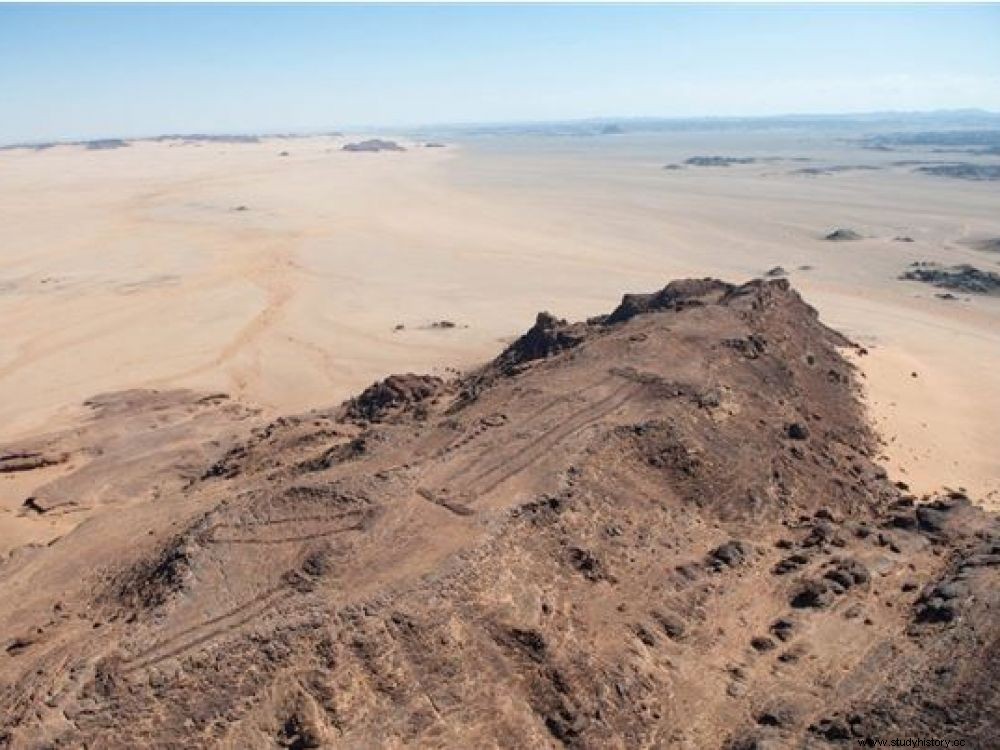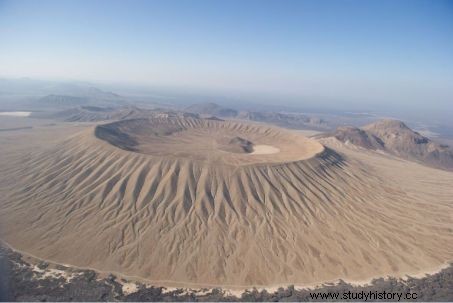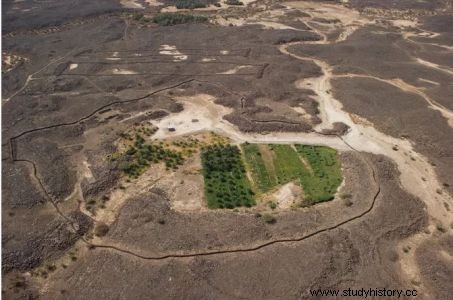Since 2017, hundreds of prehistoric stone structures have been found in northwest Saudi Arabia. Their recent study revealed ritual installations dating back 7,000 years.

These rectangular structures, also called "mustatils", are scattered across Saudi Arabia. They could be part of a prehistoric cult.
UPDATE. The mysterious "gates" of Arabia seem to be opening somewhat... "Gate" is indeed the name which had been attributed to immense constructions based on low stone walls spotted during aerial overflights carried out in the northwest of Arabia. Saudi Arabia, in 2017, including Sciences et Avenir was echoed at the time (read below). These gigantic rectangular arrangements - now called mustatil - have just been the subject of a new publication in the magazine Antiquity . Led by a team of researchers from the University of Western Australia, sponsored by the Royal Commission for AlUla (RCU), the aerial exploration of a space of 200,000 km 2 led to the location of more than a thousand of these sites, particularly in the areas of AlUla and Khaybar. The excavations of some of these works, which may also have been territorial markers, have above all demonstrated that these impressive structures stretching from 20m to 620m in length, had been erected for rituals. Offerings of bovine horns as well as cranial remains have been exhumed near standing monoliths, or betyles. "Cattle ranching was vital to the early pastoralists who occupied this region" , explains Melissa Kennedy, director of the archaeological project."And cults must have been organized around these animals" . This is underlined by the rock art encountered in this geographical area, with its pastoral scenes. The first radiocarbon dates obtained date the construction of these monuments back to the Neolithic period, around 5300 BC. J.C. "The north-west of Arabia was home to the first monumental ritual landscape in the world" , said Melissa Kennedy, joined by Sciences et Avenir . A concentration of dry stone architecture that suggests dense occupation of northwestern Arabia during the middle Holocene.
Four days is barely the time it took David Kennedy, Emeritus Professor of Archeology and Roman History at the University of Western Australia, as well as the University of Oxford (England) ), to go from virtual to real. In other words, the announcement of the tracking on Google Earth satellite images and Bing Maps from 400 man-made structures to their actual flight over the Arabian Peninsula! Indeed, the publication on October 17, 2017 of an article on these mysterious constructions in the online journal Live Science immediately resulted in an official invitation from the Saudi authorities.
Amazing assemblies made using stone walls
 The "gate" here documented measures 373 by 80 meters. So far none of these structures have been discovered outside of Saudi Arabia. © David Kennedy
The "gate" here documented measures 373 by 80 meters. So far none of these structures have been discovered outside of Saudi Arabia. © David Kennedy
For two decades David Kennedy has been interested in Harrats, these amazing assemblages made using low stone walls found in Jordan, Yemen and Saudi Arabia.
 "Door" of Samhah. © David Kennedy
"Door" of Samhah. © David Kennedy
 So-called "kite" structure. © David Kennedy
So-called "kite" structure. © David Kennedy
The "works of the Ancients"
With their geometric shapes, called "kites", "keyholes", or "wheels", these formations have been spotted by the thousands in these desert regions. Of various sizes, - some very imposing reach up to 373m long, 80m wide. These "works of the Ancients" , as the Bedouins call them, are found in lava fields and are composed of alignments of stones arranged on the ground, Arabia concealing ancient volcanoes having had a significant activity, the last eruption dating back for example to 670 of our era.
 Jabal Bayda volcano (2093m) and its lava fields in Harrat Khyber. © David Kennedy
Jabal Bayda volcano (2093m) and its lava fields in Harrat Khyber. © David Kennedy
 Map of Lava Fields in the Arabian Peninsula, Harrat. © David Kennedy
Map of Lava Fields in the Arabian Peninsula, Harrat. © David Kennedy
These constructions based on basalt rock have long intrigued researchers. The first had been reported during the 1920s by English and French pilots such as Antoine Poidebard (1878-1955) in Syria, without it being possible to really explain what their functions were or their age. Not to mention the impossibility that there was then to access all of the 2 million Km 2 what does the territory of Saudi Arabia cover!
 The awesome beauty of central Saudi Arabia. Here, the "Monument Valley" of Wadi an Nadj, in the center of the country. © David Kennedy
The awesome beauty of central Saudi Arabia. Here, the "Monument Valley" of Wadi an Nadj, in the center of the country. © David Kennedy
What eventually David Kennedy began to do virtually with a Riyadh-based colleague, Dr. Abdullah al-Sa'eed, by exploring satellite coverage of lava fields called Harret Khaybar andHarrat Uwayrid, located in the northwest of Saudi Arabia.
 Graphic rendering of the "Gates" of Khaybar. © David Kennedy
Graphic rendering of the "Gates" of Khaybar. © David Kennedy
Since then, the archaeologist has developed hypotheses on the various functions that some of these constructions could have had, some linked to agriculture - as the presence of "gates" near ancient wadi, now dried up, could attest. - or hunting, "probably to trap gazelles ". Some may even be burial complexes or individual burials.
 Ground view of basalt walls. © David Kennedy
Ground view of basalt walls. © David Kennedy
 Two ancient "gates"...and modern cultures...Some of these structures could they have had a link with agricultural activities in the past? © David Kennedy
Two ancient "gates"...and modern cultures...Some of these structures could they have had a link with agricultural activities in the past? © David Kennedy
"Thanks to the recent overflight I was able to take thousands of photos, see hundreds of these sites and sometimes visit a few when the helicopter could land nearby “, specified the expert in an article of New York Times dated November 17, 2017. "The field survey is in its infancy and it deserves to be pursued urgently by archaeological excavations in order to be able to carry out radiocarbon dating" . Perhaps the "gates" of Arabia will open to new horizons.
